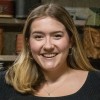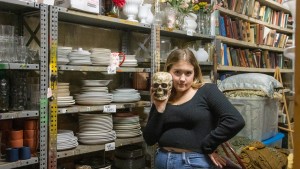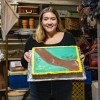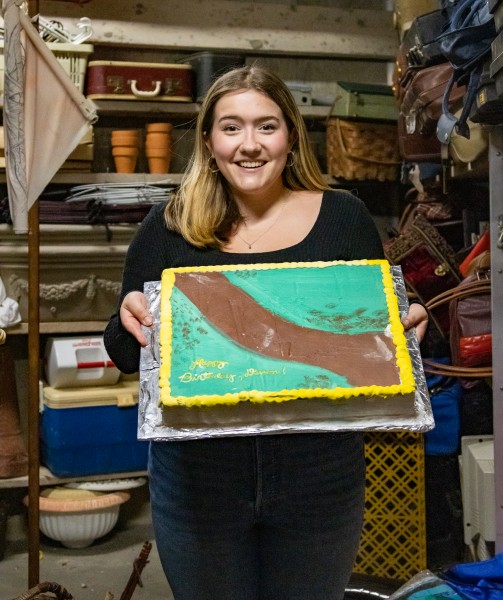When I committed to Kenyon, my mom told me I would be a “big fish in a small pond.” She was wrong. Yes, Kenyon is a small pond, but the beauty of this school is that nobody takes up too much space: there are opportunities for everybody. Those opportunities may just not look the way you expected.
At the beginning of this semester, I auditioned for a senior thesis play called Rapture, Blister, Burn. Because it was a thesis production, three of the roles had already been cast, and only two roles were open for audition: a middle-aged man and an elderly woman. So, I auditioned for the latter. And I didn’t get the part. I wasn’t surprised, of course: I’ve been rejected from things time and time again. I was mostly upset because I just wanted to be involved. I know all of the thesis performers very well and was upset I wouldn’t be able to work with them on stage. So, when one of them approached me in Peirce Hall and asked me if I wanted to design props, I said yes without a second thought. And I’m so glad I did.
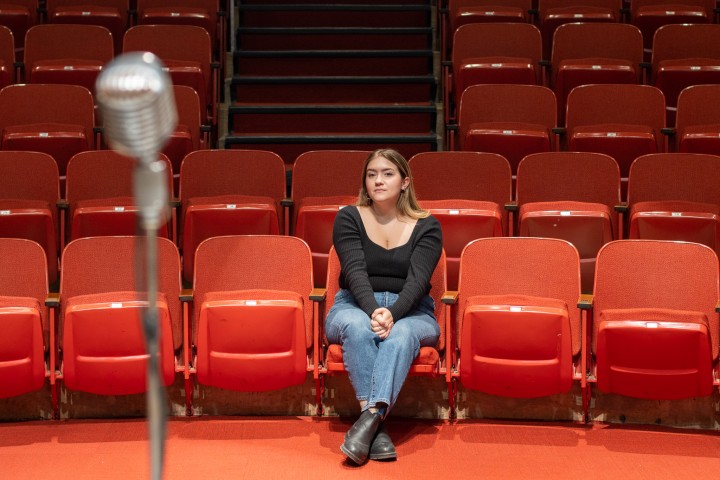 The list of props was reasonable, if not a little random: birthday presents, school supplies, beer bottles, martini glasses, books with custom covers, a birthday cake, and a leaf. The challenge, however, was that I was not allowed to spend a cent on any of it. I had to brave a space I’d never seen before: the prop closet under the Bolton Stage. It’s easy to miss in passing, but beyond its heavy metal doors is a wonderland of assorted items. Some props were very clearly leftovers from previous shows: a bag of soccer balls from The Wolves (2018); a Ouija Board from Stage Blood (2022); a fake skull undoubtedly from some past production of Shakespeare’s Hamlet. I was in the closet for upwards of an hour before I even got around to getting the props I needed for this show: I was so busy exploring all of the knick knacks and artifacts, most of which were covered in a thin layer of dust. After much gawking, I got most of my props from the closet. Now I just had to figure out the cake.
The list of props was reasonable, if not a little random: birthday presents, school supplies, beer bottles, martini glasses, books with custom covers, a birthday cake, and a leaf. The challenge, however, was that I was not allowed to spend a cent on any of it. I had to brave a space I’d never seen before: the prop closet under the Bolton Stage. It’s easy to miss in passing, but beyond its heavy metal doors is a wonderland of assorted items. Some props were very clearly leftovers from previous shows: a bag of soccer balls from The Wolves (2018); a Ouija Board from Stage Blood (2022); a fake skull undoubtedly from some past production of Shakespeare’s Hamlet. I was in the closet for upwards of an hour before I even got around to getting the props I needed for this show: I was so busy exploring all of the knick knacks and artifacts, most of which were covered in a thin layer of dust. After much gawking, I got most of my props from the closet. Now I just had to figure out the cake.
The cake, as described both in stage direction and in dialogue, is for a four-year-old’s birthday party. The characters admire it towards the end of the play, pointing out the presence of a backhoe decoration on top. I was completely lost on how to make a fake cake, let alone a grocery-store-style sheet cake completed with a construction vehicle on top. I reached out to the person who’d let me into the prop closet days before: Chris Ellsworth, Technical Director for the department of Dance, Drama and Film. I was intimidated to reach out, if I’m being totally honest—I’m completely helpless when it comes to handiness. But I took a deep breath and I sent him an email requesting help.
